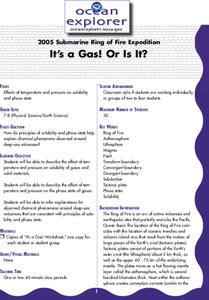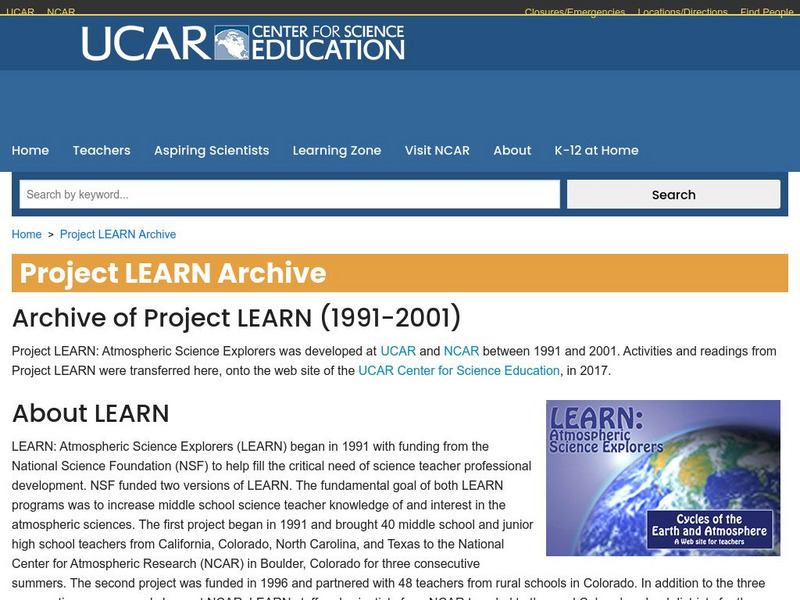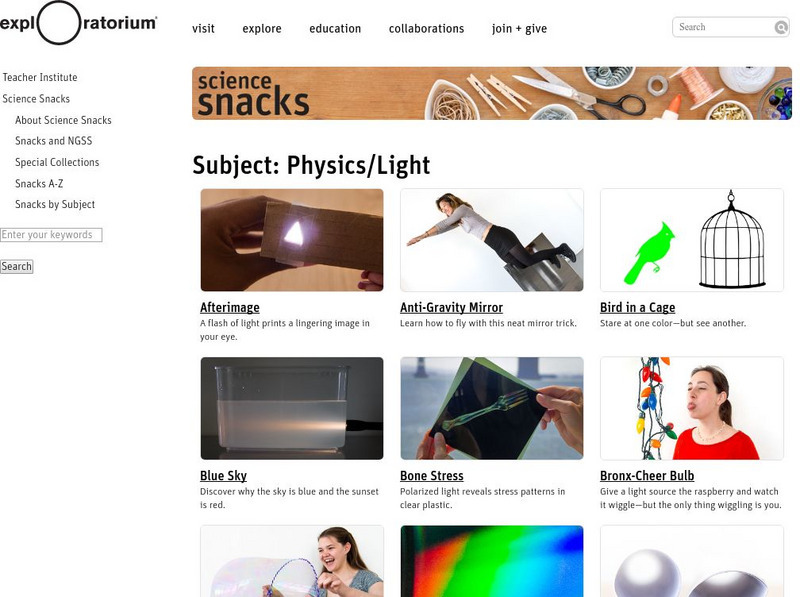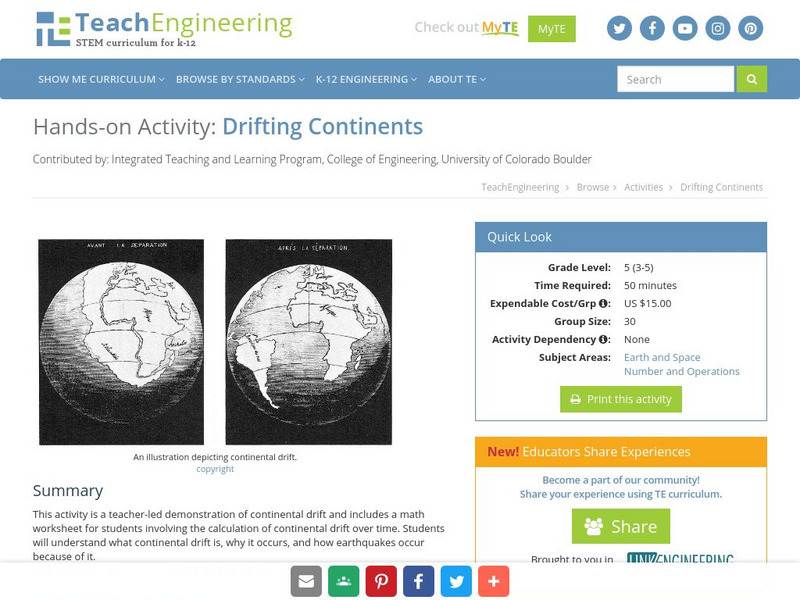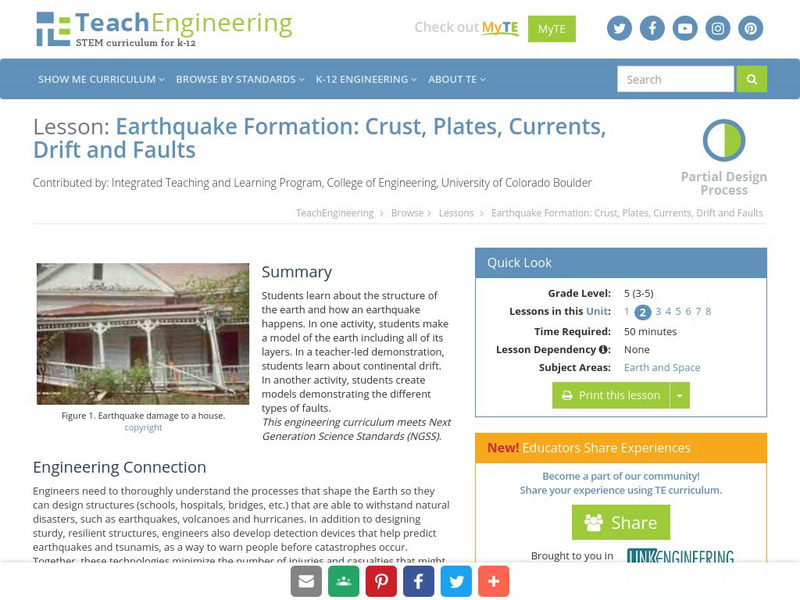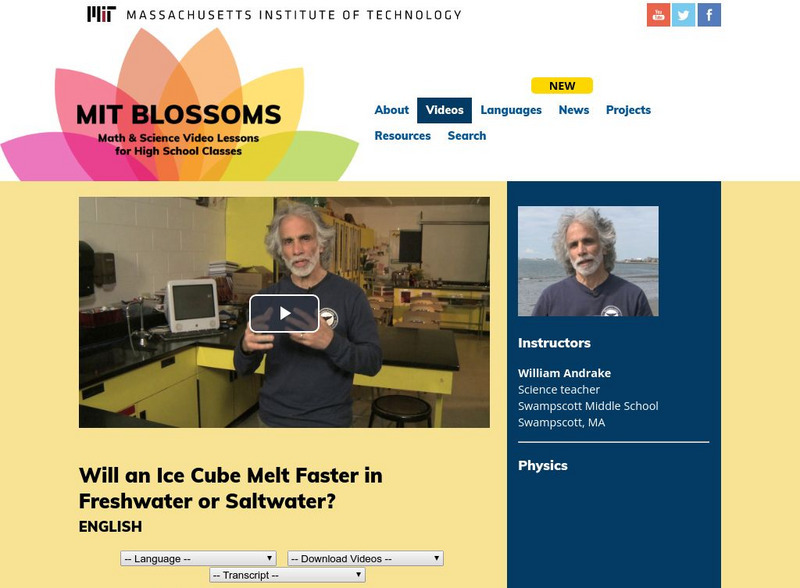Curated OER
Seafloor Block Model
Students construct a 3-D block model of the ocean floor to study fundamental earth processes. This is a preconstructed cut out that allows the students to put it together but then to add their own colors as well. There is an evaluation...
Curated OER
Window Treatments for Energy Savings
Students investigate energy-saving window treatments. For this environmental lesson, students research how energy-saving windows work by conducting an experiment using a thermometer and graphing data. Students identify why energy-saving...
Curated OER
Does Global Warming Increase the Intensity of Atmospheric Natural Disasters?
Learners study global warming by communicating the problem, process and solutions. In this global lesson students use graphs, research and write a critical stance on natural disasters.
Curated OER
It Looks Like Champagne
High schoolers determine some practical implications of the discovery of liquid carbon dioxide in deep-ocean ecosystems. They interpret phase diagrams and explain the meaning of "critical point" and "triple point."
Curated OER
It's a Gas! Or is it?
Students discover the principles of solubility and phase state and their influence on chemical phenomena observed around deep-sea volcanoes. They describe the effect of temperature and pressure on solubility of gasses and solid materials.
Curated OER
Is Air a Fluid?
Students use baking soda, vinegar, matches, and other materials to pour gas. In this air lesson plan, students use the materials to pour gas and learn that air can be a fluid like a liquid.
Curated OER
PASSWORD VOCABULARY REVIEW
Students write definitions for vocabulary words used in a unit in any subject area. They use the words to play a game.
Curated OER
Heat Flow
Young scholars explore how a whale's countercurrent flow of blood is an example of a heat exchange system and conduction. Excellent worksheet provided.
Exploratorium
Exploratorium: Science Snacks: Convection Currents
Get a visual of convention currents with this activity. This activity allows students to observe the currents by bending light due to cold and warm water.
PBS
Pbs Kids: Colored Water Convection
This PBS site allows users to learn more about water convection as they discover how to demonstrate the way convection currents form. A fun science project!
University Corporation for Atmospheric Research
Ucar: Atmospheric Processes: Convection
This site provides a pair of activities to demonstrate convection currents in air and water. Encourages students to view air as a fluid.
Museum of Science
Museum of Science and Industry: Activities: Fly a Hot Air Balloon
Step-by-step instructions, with photos, of how to construct a hot-air balloon from tissue paper, to demonstrate that heated air expands, creating a convection current. This activity requires the use of a hot air gun and is labor-intensive.
Science Education Resource Center at Carleton College
Serc: Mn Step: What Makes Thunderstorms? See Convection
Using water, food coloring, and an ice cube, students observe the movement of convection currents in a container, and illustrate what they see happening. This activity develops their understanding of how thunderstorms form.
TeachEngineering
Teach Engineering: Turning the Air Upside Down
Students develop their understanding of air convection currents and temperature inversions by constructing and observing simple models.
TeachEngineering
Teach Engineering: Let's Get Breezy!
Students apply an understanding of the concept of heat transfer through convection, conduction, and radiation as they use wireless temperature probes to investigate the heating capacity of different materials under heat lamps.
Exploratorium
Exploratorium: Science Snacks: Physics/light
Here is a large collection of simple science class activities for understanding the physics of light.
TeachEngineering
Teach Engineering: Drifting Continents
This activity is a teacher-led demonstration of continental drift and includes a math worksheet for students involving the calculation of continental drift over time. Students will understand what continental drift is, why it occurs, and...
Science and Mathematics Initiative for Learning Enhancement (SMILE)
Smile: Plate Tectonics (Intermediate)
Many activities in this lesson plan to help students understand the Theory of Plate Tectonics. Plans can be used in intermediate or middle school levels.
TeachEngineering
Teach Engineering: Weather Watchers
Students are introduced to some essential meteorology concepts so they more fully understand the impact of meteorological activity on air pollution control and prevention. First, they develop an understanding of the magnitude and...
TeachEngineering
Teach Engineering: Earthquake Formation
Students learn about the structure of the earth and how an earthquake happens. In one activity, students make a model of the earth including all of its layers. In a teacher-led demonstration, students learn about continental drift. In...
Climate Literacy
Clean: What Happens to Ice in Water?
Students investigate the properties of water in the ice and liquid phase as it relates to convection in the ocean and density driven circulation, and ultimately the climate.
University Corporation for Atmospheric Research
Ucar: Introduction to the Atmosphere
A detailed overview of the Earth's atmosphere, with explanations about atmospheric properties, the structure of the atmosphere, its four layers, atmospheric processes, energy heat transfer, conduction and convection, and radiation. All...
Massachusetts Institute of Technology
Mit: Blossoms: Will an Ice Cube Melt Faster in Freshwater or Saltwater?
Engage young scholars in the study of the ocean and saltwater with these activities. Students will see that saltwater has different physical properties than freshwater - mainly density. This instructional activity can serve as a...
University Corporation for Atmospheric Research
Ucar: Bubbles on Bottles
Students observe that a change in the temperature of air can impact the size of a bubble placed on a bottle that is cooled and/or heated.




